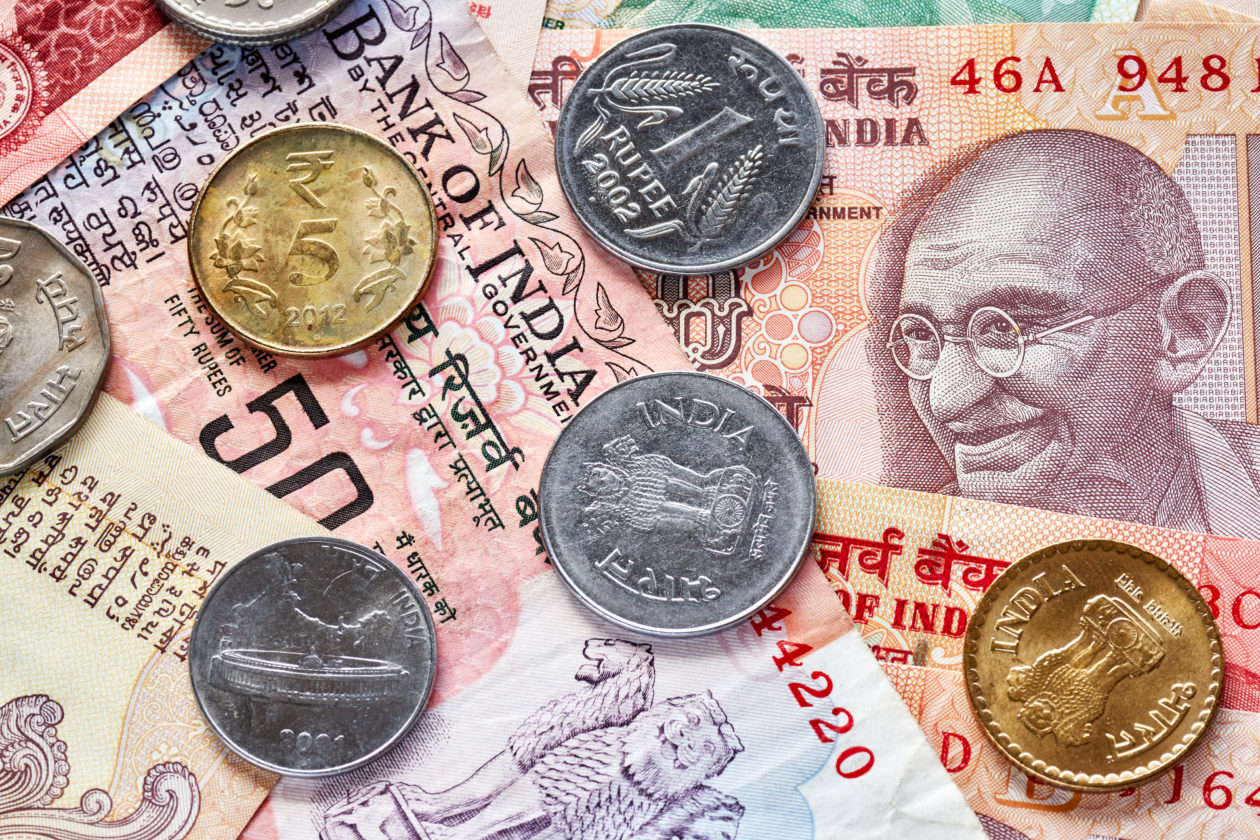In this issue
- India: A crypto quid pro quo
- Wonderland: Treasurer tossed
- Hong Kong ETF rules: Size matters
From the Editor’s Desk
Dear Reader,
“No pain, no gain” might be an apt way of summing up developments in India’s cryptocurrency industry this week.
The pain? A tax on crypto profits. The gain? Probable legitimacy for the sector after seemingly endless threats to ban it. And the caveat? A lack of specifics on what appears to be a move to regulate the industry rather than crush it.
That absence of detail is, though, a minor concern amid the likelihood that crypto appears set to be given its official bona fides. After all, governments don’t tax activities that are illegal.
New Delhi’s planned 30% tax on income generated from what it has carefully described as “virtual digital assets” will certainly prompt howls of anguish from members of the country’s burgeoning crypto community. And given that it will be levied at double the rate of capital gains tax applied to other types of investments, their displeasure is understandable. Yet unless the tax proves sufficiently onerous to hamper the industry’s development and crypto adoption, the overall benefits to the sector may outweigh the burden.
A concurrent announcement that the government plans to launch a digital rupee by March 2023 may lend further momentum to the country’s crypto sector, and give participants in it — if not individual investors — a further reason to learn to live with the new levy.
After years of dithering over crypto, India appears at last to be acting decisively in recognition of the fact that the market for digital assets — from coins to collectibles — is here to stay.
Its twin-track approach of regulating crypto while introducing a central bank digital currency stands in stark contrast to China’s “tremble and obey” stance on digital assets, reflecting Beijing’s preference for control and domination over creativity and innovation.
An accounting of the opportunity cost to China will come in due course. But as India’s framework of crypto rules and taxes takes shape, the potential gains may well be worth the pain.
Until the next time,
Angie Lau,
Founder and Editor-in-Chief
Forkast
1. New Delhi’s crypto double-act

By the numbers: digital rupee — over 5,000% increase in Google search volume.
India’s much-anticipated adoption of a central bank digital currency (CBDC) is officially underway. Finance Minister Nirmala Sitharaman announced in the country’s 2022-23 budget yesterday that the central bank would issue a blockchain-powered CBDC by March next year. The move follows a proposal by the Reserve Bank of India last year to amend existing legislation to include digital currencies in the definition of “banknotes,” paving the way for the digital rupee.
Sitharaman also announced a 30% tax on all income derived from “virtual digital assets” — which will include cryptocurrencies as well as non-fungible tokens (NFTs).
- Although the prospect of a crypto tax is being cheered by some prominent figures in India’s crypto industry as “another step towards positive crypto regulations,” others expressed dismay over the tax burdens.
- Recipients of crypto gifts will be subject to the new levy. Tax offsets for losses on crypto investments will not be permitted.
- India plans to continue taxing capital gains on non-crypto investments at 15%, or half the proposed rate for crypto profits.
- Last year, the finance ministry told parliament that the government does not collect information on cryptocurrency transactions. Despite a lack of tracing by the government, Indian exchanges and the Internet & Mobile Association of India formed a self-regulatory body last year to enforce know-your-customer requirements.
Forkast.Insights | What does it mean?
Regulation is coming to India’s crypto scene, and that’s a good thing. As debate persists over whether rules stifle innovation, regulatory frameworks provide significant upside for consumers and governments.
India had flirted with an outright ban, as has Russia, but authorities in both nations appear to have understood that trying to keep crypto out of circulation is nearly impossible, and an expensive policy to enforce. Just ask China.
Instead, taxing digital assets will create a revenue stream for the government while at the same time conferring legitimacy on an industry that has been crying out for official approval to carry out its business. India’s digital asset tax is therefore welcome, although its steep rate raises justifiable concerns over whether it may have been set so high as to deter investment in the industry and bring it to heel in a way that’s similar to — if not quite the same way as — a ban.
Regulation also brings clarity over what startups can and cannot build. Indian crypto companies had thrown caution to the wind as the government demurred over rules for the industry, spinning up hundreds of new projects in 2021. Had they been wrong in their bet on regulation, the result could have been an expensive lesson that might have set India’s crypto scene back years. Lastly, a framework of rules also brings into focus some of crypto’s more challenging problems: a disturbing level of fraud and the environmental impact of mining. Watch this space for regulatory developments on those fronts.
2. Wonderland’s treasury troubles

By the numbers: Wonderland — over 5,000% increase in Google search volume.
Decentralized finance (DeFi) protocol Wonderland’s TIME token holders have voted to oust the decentralized autonomous organization’s (DAO’s) treasury manager, an individual who went by the moniker “0xSifu.” The person behind that pseudonym has been revealed to be Michael Patryn, a convicted criminal and founder of the now-defunct cryptocurrency exchange QuadrigaCX. Patryn’s identity was unveiled by Twitter user @zachxbt, self-described as an “on-chain sleuth.”
- QuadrigaCX, founded by Patryn and Gerald Cotten, was one of Canada’s biggest cryptocurrency exchanges. The Ontario Securities Commission concluded that it was a Ponzi scheme after reports of Cotten’s death in India surfaced in January 2019.
- Before his involvement with Quadriga, Patryn was already a convicted criminal who had spent 18 months behind bars in the U.S. for his involvement with ShadowCrew, a bank and credit card scam operation.
- Although members of the DeFi community often tout anonymity as a drawcard for those in the ecosystem, its lack of know-your-customer (KYC) procedures has permitted players such as Patryn conceal their real identities.
- Blockchain forensics firm Chainalysis says that rug pulls — a form of fraud often observed in DeFi, in which founders abandon projects after withdrawing invested funds — accounted for 37% of all crypto scam revenue in 2021, up from just 1% in 2020.
- Wonderland’s TIME token has dropped by 57.4% since Jan. 26. It was trading at US$327.14 at press time.
Forkast.Insights | What does it mean?
One of DeFi’s most attractive features is also one of its biggest headaches. The anonymity of decentralized exchanges has allowed anyone to access financial services that historically were the preserve of a privileged few. Yet that same anonymity allows criminality to flourish.
Some US$10 billion was stolen in instances of DeFi-related theft last year, and as the industry continues to grow, so too will the sums lost to crime. Although anonymity allows people to transact out of the sight of (sometimes overweening) authorities, it also allows nefarious players to dodge taxes and siphon off people’s hard-earned money without the restraint imposed by the prospect of law enforcement. Traditional finance sector businesses have long enforced KYC requirements, but DeFi has so far resisted the same kind of due diligence. This is short-sighted.
Regulators want intermediaries in financial networks to look out for suspicious transactions, but DeFi players have so far refused to play any such role. Last year, U.S. officials attempted to add a clause to an infrastructure bill to increase such oversight, a move that was met with outrage by the DeFi crowd.
Such fierce resistance to regulatory oversight only fuels the perception that DeFi is a haven for lawlessness, and it may strengthen regulators’ resolve to clamp down on the industry to the detriment of legitimate users and businesses alike.
3. Hong Kong spots a problem with ETFs

Hong Kong’s de facto central bank and its Securities and Futures Commission (SFC) has shut retail investors out of access to cryptocurrency spot exchange-traded funds (ETFs) in a set of newly issued guidelines.
- The circular in which the guidelines are laid out says that only “professional investors” will be allowed to invest in such products, although derivative products in SFC-recognized markets, such as the Bitcoin futures ETFs that launched on U.S. exchanges last year, may still be offered to retail traders.
- Hong Kong’s rules define professional investors as those with portfolios of at least HK$8 million (around US$1 million).
- The city’s financial authorities say the unregulated nature of the crypto spot market could pose risks to retail investors.
- Last year, Hong Kong published proposals that would prevent licensed cryptocurrency exchanges in the territory from offering services to “non-professional” investors.
- U.S. regulators have also said that crypto spot ETFs involve greater risk than derivatives ETFs. The U.S. Securities and Exchange Commission (SEC) has not approved any Bitcoin spot ETFs but has approved Bitcoin futures ETFs, which started trading on the New York Stock Exchange and the Nasdaq more than three months ago.
Forkast.Insights | What does it mean?
Hong Kong’s decision to shut retail investors out of spot crypto ETFs is another reminder that some parts of the crypto industry still have a long way to go to prove they are safeguarding investors’ assets.
The Hong Kong regulators’ reasons for the new rule echo those of the U.S. SEC, which for eight years refused to approve crypto ETFs before finally giving the go-ahead to Bitcoin futures ETFs. Spot crypto ETFs would allow investors to buy into cryptocurrency without the hassles of having to handle and hold the digital assets themselves. But a spot ETF would also expose investors to every bit of crypto’s notorious price volatility.
Futures-based crypto ETFs involve trading derivatives linked to index prices and can be less volatile. But the hefty fees and rolling contracts involved in derivatives trading also may make crypto futures ETFs less attractive to many investors. Futures ETFs come with additional expenses because derivatives contracts expire, meaning that investors are forced to repurchase contracts to maintain their exposure, which can eat into their profits.
With crypto prices expected to face severe headwinds this year as the days of cheap money and rock-bottom interest rates vanish, Hong Kong regulators are trying to bring in protections to ensure small traders aren’t in for an even rougher ride in 2022.




